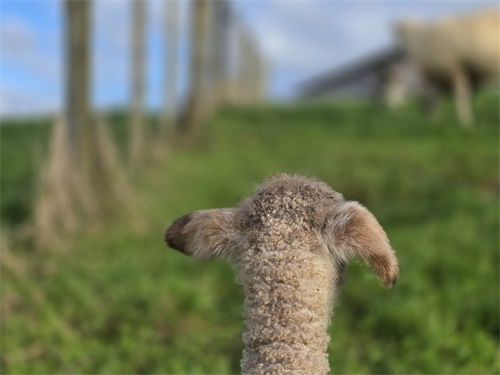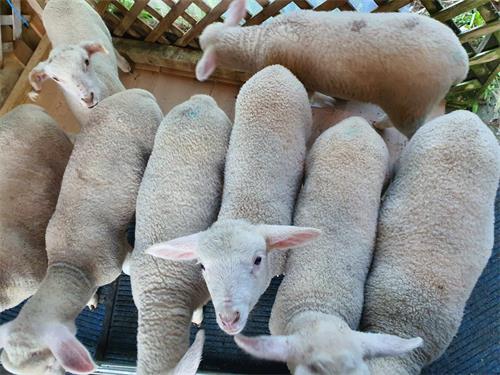Anyone who’s been around sheep farming for a while knows liver fluke is a real headache. It’s one of those pesky parasites that can silently wreck your flock’s health and productivity. Traditionally, farmers rely on fecal egg counts, blood tests, or post-mortem liver inspections to identify liver fluke infections. But these methods aren’t always the most accurate or timely. That’s where ultrasound steps in — a tool that’s quietly transforming how we detect and manage this problem on farms.

Why Liver Fluke Is Such a Challenge
Liver fluke (Fasciola hepatica) is a parasitic flatworm affecting mainly sheep and cattle. The worms invade the liver and bile ducts, causing damage that leads to weight loss, reduced wool quality, anemia, and even death in severe cases. What’s tricky about liver fluke is its life cycle and how it interacts with the environment.
Fluke larvae develop in freshwater snails and are spread via contaminated pasture. So, in wetter climates or seasons, the risk of infection shoots up. Also, the parasite has an insidious incubation period, meaning sheep can be infected for weeks or months before showing any obvious symptoms.
Traditional Diagnosis Methods: The Pros and Cons
Most farmers are familiar with these common approaches:
Fecal Egg Count (FEC): Detects fluke eggs in sheep droppings. It’s straightforward but only effective once adult flukes have matured and started laying eggs — often weeks after initial infection. Plus, it can be tricky to detect light infections.
Serum Antibody Tests: These blood tests can detect exposure earlier but can’t distinguish between current and past infections.
Post-mortem Examination: The most accurate method but obviously only possible after the sheep dies or is slaughtered.
These methods, while useful, can miss early infections or underestimate infection intensity. That’s a real problem because liver fluke can cause damage before eggs even appear in feces. This is where ultrasound shines.
Using Ultrasound for Liver Fluke Diagnosis
Ultrasound — yes, that same tech you might know from medical or veterinary pregnancy checks — can visualize the liver and detect abnormalities caused by fluke infection. The idea isn’t new, but recent advances have made it more practical and affordable for farmers.
With ultrasound, you can non-invasively scan the liver of live sheep and look for signs like:
Liver fibrosis or scarring: Fluke migration and feeding cause fibrotic patches that alter liver texture and echogenicity.
Bile duct thickening: Adult flukes live in bile ducts, causing them to thicken or become irregular.
Fluid accumulation: Sometimes, fluke damage leads to fluid build-up visible on ultrasound.
The benefit? You’re detecting physical damage directly rather than just waiting for eggs or blood markers. It means earlier diagnosis, better treatment timing, and potentially saving animals before serious harm sets in.
How Practical Is Ultrasound on Sheep Farms?
You might wonder, "Is this just a vet tool or something a farmer can use day-to-day?" While traditionally vets have handled ultrasound exams, portable ultrasound machines are now lightweight, affordable, and simple enough that with some training, farmers or farm workers can perform basic liver scans themselves.
Imagine scanning a suspect animal’s liver during routine health checks. If you see suspicious changes, you can isolate that sheep, run confirmatory tests, or treat it promptly. Early detection helps in managing fluke strategically — for example, deciding when to drench or when to move sheep off wet pastures.
What Does the Scan Process Look Like?
Ultrasound scanning on sheep isn’t complicated but does require some practice:
Preparation: Sheep are gently restrained. The right side of the abdomen, behind the ribs, is shaved or cleaned to improve image quality.
Probe placement: A small, high-frequency probe (around 7.5 MHz) is placed between the ribs to capture liver images.
Image interpretation: Healthy liver tissue looks fairly uniform and medium-gray on ultrasound. Areas of fluke damage show as irregularities — brighter or darker spots, thickened bile ducts, or cyst-like structures.
Most of the time, vets or trained technicians review the images. But with experience, farmers can recognize common signs and take action faster.
What Farmers Are Saying: Real Benefits from Ultrasound Use
Farmers across various countries have shared their experiences with liver ultrasound in sheep:
Early Intervention: Detecting liver damage before symptoms or egg shedding means treatment can start early, limiting production loss.
Targeted Treatment: Instead of blanket drenching, farmers can selectively treat infected animals, reducing drug costs and minimizing resistance risk.
Better Monitoring: Ultrasound provides a direct window into liver health over time, so farmers can monitor the effectiveness of treatments or pasture management.
Improved Welfare: Catching fluke damage early helps keep sheep healthier, improving weight gain, fertility, and wool quality.
One UK farmer commented, “Using ultrasound to spot liver fluke early has saved me from losing several sheep last year. It’s a bit of extra work but worth it for the peace of mind.”
Challenges and Considerations
Ultrasound isn’t perfect. There are some things to keep in mind:
Skill and Training: Getting good images and interpreting them correctly requires practice. That’s why some farms collaborate closely with vets or technicians.
Cost and Equipment: Though prices have dropped, purchasing an ultrasound machine is an investment. However, the long-term savings from reduced fluke losses can justify it.
Not a Standalone Test: Ultrasound should complement other diagnostic methods — it won’t replace fecal egg counts or serology but enhance overall diagnosis.
Animal Handling: Sheep need to be handled calmly to avoid stress during scanning.
Despite these factors, the technology is becoming increasingly accessible.
Combining Ultrasound with Other Strategies
Ultrasound fits well into a holistic liver fluke control plan:
Pasture management: Avoid grazing sheep on wet, snail-infested areas during peak risk seasons.
Strategic drenching: Use ultrasound and fecal tests to time treatments effectively, avoiding unnecessary dosing.
Breed selection: Some sheep breeds show better natural resistance to fluke.
Record keeping: Regular ultrasound scanning adds valuable data to your health records.
Integrating ultrasound results with other farm data helps make smarter decisions.
The Global Perspective: What Farmers Abroad Think
Sheep producers in countries like Australia, New Zealand, and parts of Europe have been quick to adopt ultrasound in their fluke management. The wetter climates in these regions mean liver fluke is a constant threat. Farmers appreciate how ultrasound provides a quick snapshot of liver health without waiting weeks for lab results.
A New Zealand farm manager mentioned, “Ultrasound has changed how we think about fluke. Instead of reacting late, we’re proactive — spotting issues before sheep start wasting away.”
In contrast, in drier regions where liver fluke pressure is lower, ultrasound is less commonly used but gaining attention as awareness grows.
Future Developments and Tech Trends
The future looks promising. Portable ultrasound devices are becoming even more user-friendly, with wireless probes connecting to smartphones or tablets. Some companies are developing AI-based software to assist in interpreting liver scans, making it easier for farmers without deep training.
Imagine a farm worker scanning a sheep’s liver, then instantly getting an assessment on their phone whether the liver looks normal or suspicious. That kind of tech could revolutionize parasite management on farms globally.
Also, combining ultrasound with other imaging methods or biomarkers may give a fuller picture of sheep health.
Wrapping It Up: Ultrasound as a Game-Changer in Liver Fluke Control
Managing liver fluke is an ongoing battle for sheep farmers, but ultrasound adds a powerful weapon to the arsenal. By allowing early, non-invasive detection of liver damage, it helps farmers make timely treatment decisions, optimize flock health, and improve productivity.
While it’s not a magic bullet, when used alongside traditional tests and good farm management, ultrasound makes liver fluke diagnosis more accurate and efficient. As more farms adopt this approach, it’s likely we’ll see better outcomes and fewer losses worldwide.
If you’re dealing with liver fluke headaches, it’s worth exploring ultrasound as part of your toolkit. It may just save you time, money, and a lot of frustration.







